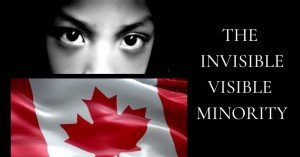
As we established in our previous blogs, a racialized family that barely has found jobs will be forced to live in a low income neighbourhood, and thus begins another struggle with their children’s education.
It is an undeniable fact that children in low income neighbourhoods do not get the same education experience as richer neighbourhoods. Indeed, many Canadians choose a neighbourhood based on the reputation of its public schools, and homes within the area of desirable schools are in demand and more expensive.
Schools in low-income neighbourhoods face huge challenges in raising money to buy equipment such as computers, lab equipment, video surveillance, playground equipment and school buses for children with special needs. Also, they wouldn’t be able to raise money for additional teacher hours to help students. Arts, sports or any extracurricular activities would be very limited.
Another issue facing racialized students, is discrimination and marginalization in their school, regardless of the neighbourhood’s income level. The most recent research was done in 2016, and it found that racialized students were disproportionately expelled from schools. Black students were 12% of the Toronto District School Board student population but represented 48% of all expulsions; Indigenous students were 0.3% of the student population and 1% of all expulsions; Eastern, Mediterranean and Southwest Asian students were 4% of the population but 8% of all expulsions.
Beyond the statistics of expulsion, there lies another layer of discrimination, where children suffer from being marginalized in school. All over Canada, racialized parents listen to heartbreaking stories from their children who do not understand why their teachers don’t respond to them, don’t help them, or simply ignore their achievements. Racialized parents have to talk to their children and teach them that what others think doesn’t matter, which in turn fuels the isolation these children feel.
On top of this, racialized children face a tremendous amount of bullying at school. In a CBC survey last year, they found that more than half of young people that identified as visible minorities say they’ve been subjected to racist names or comments. One in eight said it happened more than five times. The survey also revealed that 41 per cent of boys reported being physically assaulted in high school.
While few places in Canada continue to separate students and streaming them into non-academic programs, it is a practice that was still in effect till recently, and it shows the extent of racial discrimination in schools. Black and Indigenous students are more likely to be streamed into non-academic programs than White or some of the other racialized students. In 2015 the Toronto District School Board (TDSB ) reported that 53% of Black students and 48% of Indigenous students, compared to 81% of White students, were enrolled in Academic programs of study; while 39% of Black students and 41% of Indigenous students, compared to 16% of White students, were in Applied programs.
The chances for children to get the necessary grades or enough money to enroll in universities and receive a higher education are quite low. The study stated that children of families with the lowest income levels are about half as likely as those in the top income level to attend university.
Education is the cornerstone of a successful life. It is where the academic skills are built, and it is also where the character is built. If we subject children to bullying, marginalization, and racist acts, then we are intentionally ruining their future. This is where systemic racism is most ugly.
As with the other manifestations of systemic racism in Canada, more studies and research is needed so that we can devise impactful solutions.